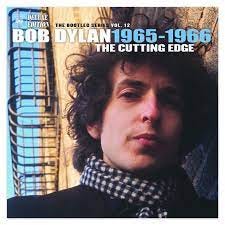Today is Bob Dylan’s 80th birthday.
Wherever poetry is revered and words set to the cadences of music are cherished, people will raise glasses to his genius. They’ll talk about Blonde On Blonde and listen, again, to the ambling “Murder Most Foul,” which was released on Rough and Rowdy Ways in 2020 and provides further proof, though none is needed, of his enduring mastery of language, meaning, implication.
The scribes who’ve championed and excoriated him will crank out extra-long essays loaded with excerpts from decades-old reviews, to ponder the artist’s greatness (or his shortcomings) all over again. And when the radio DJs cue up “Like a Rolling Stone” or another of the Dylan hits, a not-small portion of the listening audience might groan and think: There are other Dylan album cuts they could be playing. How about that version of “Careless Love” from those Johnny Cash sessions?
Which brings us to a facet of Bob Dylan’s late career that, remarkably, still hasn’t been properly lauded: The river of smartly organized outtakes from his back pages. The ongoing Bootleg Series project, which is up to some 15 titles (many of them boxed sets), helped transform the way music people think about the material that gets left behind in the artistic process – the alternate takes and abandoned experiments. The leftovers.
Since its first release in 1991, the Bootleg Series has presented an elaborate alternate history of Dylan’s work – and in the process helped set an industry standard for archival releases. Yes, there were boxed sets and career retrospectives before Columbia/Legacy began work at the Dylan mine, but not all of them were made with an eye toward history. The industry viewed these types of compilations as having a limited audience and budgeted accordingly – why spend big to create a package around rejects and remainders, odds and sods?
The Bootleg Series is guided by the opposite argument: That given Dylan’s impact on popular culture, the scraps and abandoned pathways have inherent historical value, and can help enhance understanding of the artist’s thinking as he was developing what became iconic albums.
Organizing its titles by theme or chronology or both, the Bootleg Series offers listeners the chance to pursue, at depth, Dylan’s writing (and revising) process, as well as the ways he’d experiment with emphasis, meter and cadence in the studio. Consider Volume 12, titled The Cutting Edge. It chronicles the fertile (one essay in the lavish booklet describes it as “superheated”) period between January 1965 and February 1966 – represented on Bringing It All Back Home, Highway 61 Revisited and Blonde On Blonde. On the first take of the first song recorded for Highway 61 Revisited, “It Takes A Lot to Laugh, It Takes a Train to Cry,” we hear Dylan at the piano, working out a gleefully ramshackle boogie rhythm; he revisits the tune a month later, with Al Kooper at the organ and Dylan on guitar, and the DNA of the original groove is transformed into the one we know – a settled, breezy, completely visionary distillation of blues and rock.
Likewise, there are multiple rehearsal versions and false starts of “Like A Rolling Stone” that show, step by step, how the tune evolved in the studio; they’re not all enthralling listening but they are certainly enthralling as footnotes to history. As a Producer’s Note on the credits page explains, “The purpose of The Cutting Edge is to illuminate what happens in the studio on the way to making a record.”
On Vol. 12 and throughout the series, the audio detective work is impressive: Producers Jeff Rosen and Steve Berkowitz found important snippets of tape lurking on the (extensive) session reels, and managed to track down the musicians and others whose contributions might not have made the final cut. That scholarship is augmented by the packaging, which typically includes detailed credits, newly commissioned essays looking back at the recordings and what was going on in the culture at the time, and countless rare photographs and little-seen, delightfully period-specific print ads.
The result is not simply an archival blast from the past – it’s a nuanced, context-rich exploration of process. The Bootleg Series traces the routes early, impulsive melodic ideas travel as they become harrowingly perceptive world-culture-classic songs. It shines light on the chemistry between Dylan and his co-conspirators (check Vol. 11 for a concentrated dose of this with The Band during the making of The Basement Tapes).
The world of music has changed since the early days of the Bootleg Series – these days, music obsessives expect truckloads of material from the vault, with documentation on every track that’s been unearthed. In response, many artists and their estates are increasingly borrowing elements of the Bootleg Series model – last fall’s trove of early Joni Mitchell recordings, Archives Vol.1 — The Early Years, was curated and annotated with similar sensitivity and attention to detail.
That’s a big accomplishment. Someday it’ll be seen as a priceless peak behind the curtain, an undeniable contribution to the culture of music. If the Bootleg Series gets short shrift in the ongoing discussion of all things Dylan right now, that’s probably because the primary works themselves remain so incandescent.
Why yes, we have a fancy digital suggestion box. Share your favorite Underloved/Overlooked records here: echolocatormusic@gmail.com.
Please consider subscribing (it’s free!). And…..please spread the word! (This only works via word of mouth!)








